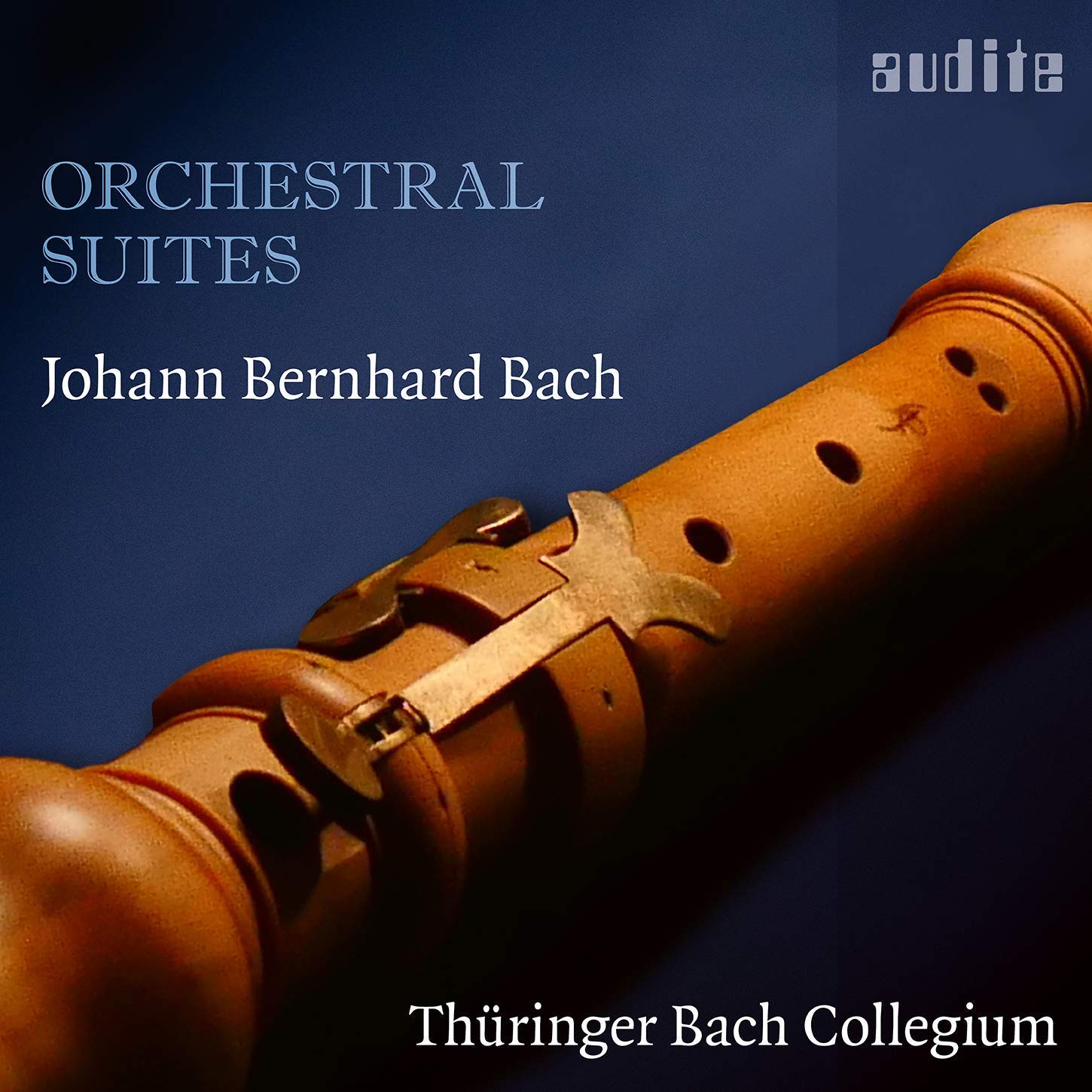Thüringer Bach Collegium
82:22
audite 97.770
These four suites by Johann Sebastian’s second cousin and near contemporary display his skill and invention. Cast in the form of suites with a series of dances, some movements feel more like concerti so close are they to the Italian and French models current in the cultured courts of the principalities of central Europe, where French cuisine and dress and Italian music were known.
From 1703, Johann Bernhard held the post of organist in Eisenach till his death in 1749, overlapping between 1708 and 1712 with Telemann. He was also harpsichordist to the admired court orchestra of Duke Johann Wilhelm of Sachsen-Eisenach.
J. S. Bach had copied out at least three of these suites for the Collegium in Leipzig, and it is because of this set of parts that Johann Bernhard’s music survives. The two Bachs were cross godparents to each other’s children, and Johann Bernhard’s ease with the French as well as the Italian style gives us an interesting glimpse of the cosmopolitan nature of this small Saxon court.
The competent players of the Thüringer Bach Collegium use single strings plus the director, Gernot Süßmuth’s solo violin and muster two oboes, a taille and fagotto, and one is heard playing recorder and traverso.
The performances are snappy, and sometimes a little rustic – some slapping of the instruments from time to time; but the major and in the end irritating fault is that the kontrabass is either miked far too closely or else just plays insensitively. With single strings, I would have been quite content with a violone or bass violin at 8’ pitch, but a substantial double bass thumping away – frequently joined by the harpsichordist’s lute stop – is an error of judgment and doesn’t blend with the rest of the band as it should.
The music was recorded in the Georgenkirche in Eisenach and from the photo in the booklet the players were standing just east of the font in which JSB was baptised. The essay (in German and then in English) on where this music fits into the high Baroque in Saxony is admirably informative. But there is no information on instruments or temperament, which would have been a plus. The ensemble has already recorded concerti by Prinz Johann Ernst von Sachsen-Weimar on the same label, and is clearly performing a notable service in making this kind of court music available to a modern audience.
The music is novel, fills a gap in our understanding of court life in the early 18th century and is tuneful as well as original. If you can bear the kontrabass, you will enjoy this music.
David Stancliffe
Click HERE to buy this CD on amazon.
